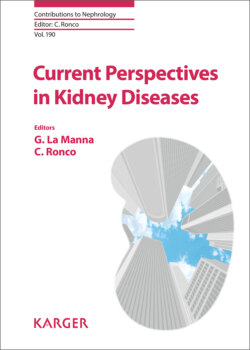Читать книгу Current Perspectives in Kidney Diseases - Группа авторов - Страница 20
На сайте Литреса книга снята с продажи.
Anticoagulation Strategies
ОглавлениеThe most used anticoagulation strategy is still represented by unfractioned or low molecular weight heparins. However, several problems associated with heparin use should be considered when critically ill patients are subjected to RRT. First, heparin and heparinoids may be contraindicated in particular cases (i.e., heparin-induced thrombocytopenia); moreover, in the case of S-AKI, the low levels of antithrombin III (ATIII) and the putative inflammatory effects of heparin may lead to a premature clotting of the circuit. Intravenous administration of ATIII is recommended to maintain levels higher than 60–70%. In accordance with KDIGO guidelines [44], for patients with hemodynamic instability in which continuous therapies represent the treatment of choice, regional citrate anticoagulation (RCA) should be adopted. Several studies demonstrated the advantage of RCA in comparison to heparin in reducing bleeding and increasing circuit lifespan without clotting episodes. A randomized clinical trial by Oudemans Van Straten et al. [54] also revealed a better survival of RRT patients treated with RCA in comparison to heparin; even though these results have not been replicated in other studies, some specific characteristics of citrate should be considered when S-AKI patients are treated. Indeed, citrate is known to exert potent anti-inflammatory effects such as a reduced formation of platelet-leukocyte complexes and of polymorphonuclear cell degranulation together with the induction of decreased levels of markers of oxidative stress and IL-1-beta. Since citrate may interfere with intracellular calcium signaling that is essential for the release of inflammatory mediators from activated cells, this anticoagulation strategy will be certainly the main actor of future studies aimed at limiting inflammation in the course of S-AKI.
